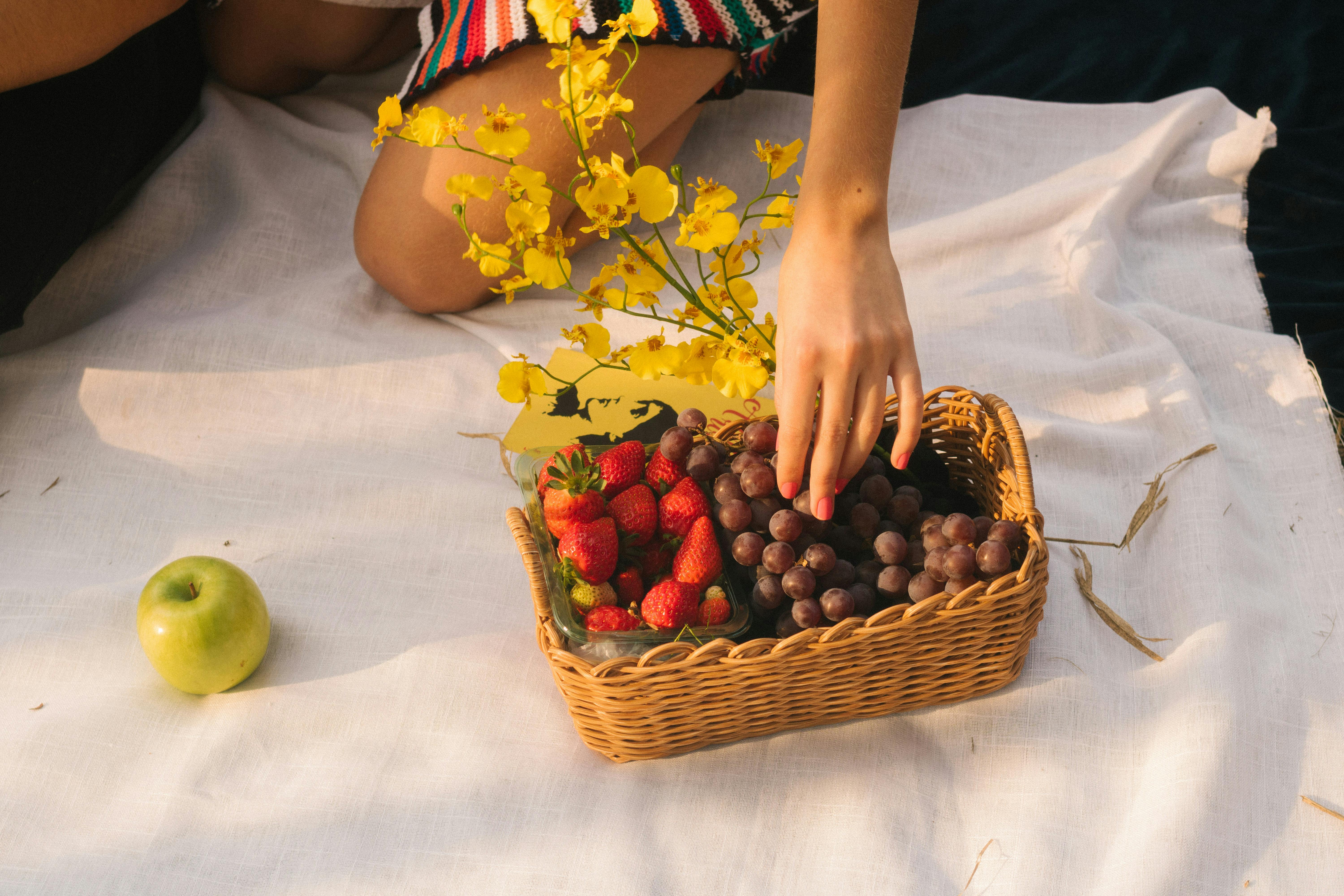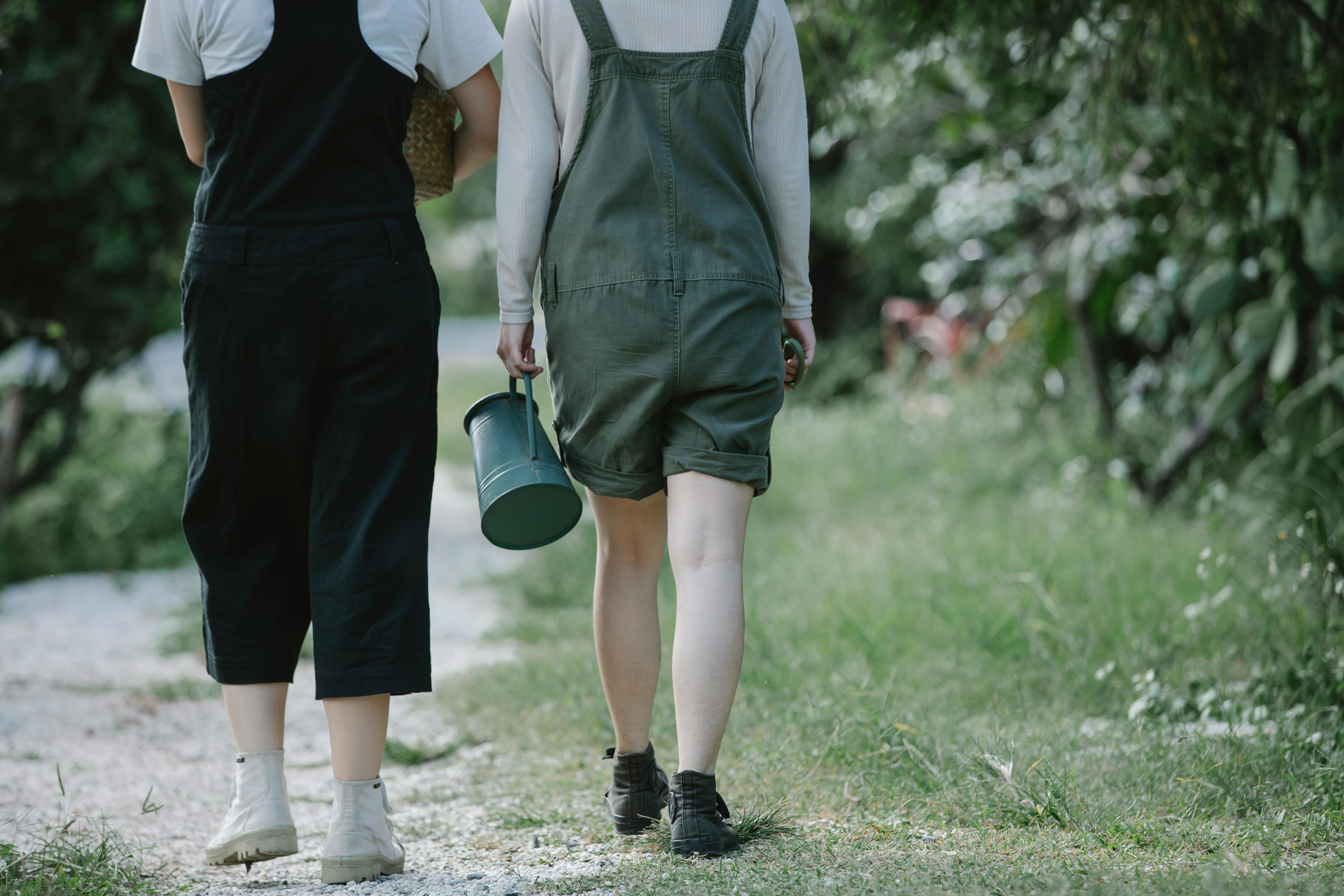Growing strawberries in a hanging basket is a great way to add some delicious fruit to your garden. Not only does this create an attractive display, but it also allows you to enjoy the sweet taste of ripe strawberries without taking up too much space. With the right conditions, you can grow strawberries in a hanging basket and reap the rewards of your own homegrown produce!Yes, strawberries can be grown in a hanging basket. Hanging baskets are an ideal way to grow strawberries as they provide excellent drainage and create a container planting that is easy to maintain. Strawberries planted in hanging baskets should be exposed to at least 6 hours of sunlight each day and should receive regular watering. With proper care, you can enjoy homegrown strawberries from your hanging basket.
Growing Strawberries in Hanging Baskets
Growing strawberries in hanging baskets is a great way to cultivate a bountiful crop of sweet, juicy berries. Hanging baskets are ideal for smaller spaces and provide an abundance of air circulation for the strawberry plants, leading to larger and more abundant yields. Additionally, using hanging baskets to grow strawberries helps protect the plants from pests and diseases that may be present in the ground. Here are some of the benefits of growing strawberries in hanging baskets:
Easy Maintenance: Hanging baskets make it easier to access and maintain strawberry plants. With the basket suspended in mid-air, it is easy to check on the roots and prune away dead leaves or branches without having to bend down or kneel on the ground.
Protects from Pests: Keeping strawberry plants elevated helps protect them from pests and other critters. Since they are above ground level, they are less likely to be attacked by snails, slugs or other creatures that may live in the soil below.
Better Air Circulation: Hanging baskets offer better air circulation for strawberry plants than planting them directly in the ground. This helps promote healthy growth of the plant and more robust yields of berries.
Space-Saving: Growing strawberries in hanging baskets is a great way to save space if you don’t have a lot of room for gardening. The basket can be hung from a balcony railing or other elevated surface, freeing up valuable garden space for other crops.
Overall, growing strawberries in hanging baskets provides many benefits including easy maintenance, protection from pests, improved air circulation and space-saving convenience. Whether you have limited space or just want to make gardening easier, growing strawberries in a hanging basket is an excellent choice!
Types of Strawberries That Can Be Grown In A Hanging Basket
Strawberries are a popular fruit that can be grown in many different ways. One of the most popular methods is to grow them in a hanging basket. This is an easy and efficient way to grow strawberries, as they require little space and less water than traditional garden beds. There are several types of strawberries that can be grown in a hanging basket, each with its own unique characteristics.
Alpine strawberries are small and sweet strawberries that produce an abundant crop. They do not spread out like other types of strawberries, making them ideal for growing in a hanging basket. They are also very hardy and can survive cold temperatures better than other types of strawberries.
Day-neutral strawberries are also great for growing in a hanging basket because they produce an abundant crop throughout the summer months and into the fall. Unlike other varieties of strawberries, day-neutral varieties don’t require specific temperature requirements for fruiting.
Everbearing strawberries are another type of strawberry that is ideal for growing in a hanging basket because they produce an abundance of fruit over multiple harvests during the summer months. They also tend to have larger berries than other varieties, making them more appealing to eat fresh or use for cooking or baking recipes.
June-bearing strawberries are probably the most common type of strawberry grown in a hanging basket because they tend to produce large berries with excellent flavor. June-bearing berries usually only produce one harvest per year but they can be quite prolific when grown correctly.
No matter which type of strawberry you decide to grow in your hanging basket, it’s important to take care when planting and caring for your plants so that you can get the best yield possible. Make sure you provide plenty of water and fertilizer throughout the season, as well as pruning any dead or damaged foliage regularly so that your plants stay healthy and productive.
Preparing The Hanging Basket For Growing Strawberries
Growing strawberries in a hanging basket is an ideal solution for those with limited garden space. The baskets provide plenty of room for the roots to develop and the plants to spread out, while taking up little space. Preparing the hanging basket correctly is essential for successful strawberry growing, and there are a few tips that can help ensure success.
To begin, it is essential to choose a basket that is designed specifically for growing strawberries. These baskets are generally made from materials like plastic, metal or wood. They should be large enough to allow the roots and plants to grow freely, and should also have drainage holes at the bottom.
The next step is to fill the basket with soil mix suitable for strawberries. It is important to use a mix that contains peat moss or compost as these will help retain moisture and provide necessary nutrients for healthy growth. If you purchase pre-bagged soil mix, check that it contains all of these ingredients before use.
It is also important to add some slow-release fertilizer before planting as this will give your plants a boost during their first few weeks of growth. After filling the basket with soil mix, dampen it slightly before planting your strawberry plants. Once your plants have been planted, water them thoroughly using a watering can or hose attachment set on a low pressure setting.
Finally, when it comes time to hanging your basket, make sure you hang it in an area that receives at least six hours of sunshine each day. In addition, ensure the area has good air circulation so that any excess moisture can evaporate quickly if necessary. Once your basket is in place, continue to water regularly and apply fertilizer monthly during the growing season for best results.
Following these simple tips will help ensure success when growing strawberries in a hanging basket!
Planting Strawberries in a Hanging Basket
Planting strawberries in a hanging basket is a great way to enjoy these delicious fruits while saving space in the garden. A hanging basket provides good air circulation, allowing the soil to stay dry and preventing disease. It also gives you the flexibility to move the basket around, so you can put it in the sunniest spot or move it away from windy areas. When planting strawberries in a hanging basket, make sure to use a potting mix designed for containers or hanging baskets. This type of mix provides good drainage and contains organic matter which helps retain moisture and nutrients for the plants.
Choose Right Variety
When choosing a variety of strawberry plant for your hanging basket, look for one that is designated as an “everbearing” or “day-neutral” variety. These varieties produce fruit throughout the season instead of just once, so you will have an ongoing supply of ripe berries all summer long. Some popular everbearing varieties include ‘Tribute’, ‘Ozark Beauty’, and ‘Totem’.
Prepare Basket
Before planting strawberries in your hanging basket prepare it by adding several inches of potting mix at the bottom to create enough space for roots to spread out. Then place four or five strawberry plants evenly spaced around the outside edge of the basket and fill in with more potting mix until all plants are covered up to their crowns (the point where leaves start growing). Make sure that each plant has enough room to grow without crowding its neighbours.
Care For Plant
Once planted, water your strawberry plants regularly during dry spells and fertilize them every two weeks with a balanced fertilizer like 10-10-10 or 20-20-20. If temperatures are consistently over 85°F (29°C), protect your plants by providing some shade during hot afternoons and be sure to water deeply at least once a week during periods of extreme heat. Also be sure to keep any weeds under control by either hand weeding or mulching with straw or pine needles around plants as this will help keep them healthy and productive.
Harvesting Strawberries
Strawberry fruits are ready for harvest when they turn red and are easy to pull off with gentle tugging motion. Be sure not to leave any ripe berries on plant as this can reduce future fruit production and attract pests such as birds which can damage other fruits on plant too. After harvesting, enjoy your freshly picked strawberries right away or store them in refrigerator if not using immediately.

Growing Strawberries In A Hanging Basket
Growing strawberries in a hanging basket is an easy and rewarding way to enjoy delicious, homegrown strawberries. The process is simple, and the results are delicious. To successfully grow strawberries in a hanging basket, you will need to provide the plants with a few key requirements.
Location
The first requirement for growing strawberries in a hanging basket is location. Strawberries prefer to be grown in a sunny location that receives at least six hours of direct sunlight each day. If you don’t have an outdoor space that gets enough sun, you can use artificial lighting to supplement the natural sunlight.
Soil and Fertilizer
The next requirement for growing strawberries in a hanging basket is soil and fertilizer. Strawberries require well-draining soil with a slightly acidic pH level between 6 and 6.5. You should also add organic matter like compost or manure to the soil to help boost fertility and retain moisture. Finally, it’s important to fertilize your plants regularly throughout the growing season with an all-purpose fertilizer formulated for strawberries or other fruiting plants.
Watering
Watering is another important requirement for growing strawberries in a hanging basket. Strawberries require regular watering throughout the growing season to keep their soil moist but not soggy. It’s best to water deeply once or twice per week, depending on the weather and your local climate conditions. Be sure to check the moisture level of the soil before watering by sticking your finger into it up to about 2 inches deep; if it feels dry then it’s time to water again!
Pruning
Finally, pruning is another important requirement for growing strawberries in a hanging basket. Pruning helps encourage healthy growth by removing dead leaves, flowers, and runners from the plant, as well as thinning out overly crowded areas of foliage so that new growth can come through more easily. Prune your strawberry plants once or twice per year during their dormant period (usually late winter or early spring).
By providing these basic requirements for growing strawberries in a hanging basket – location, soil/fertilizer, watering, and pruning – you can enjoy delicious homegrown berries all summer long!
Growing Strawberries in a Hanging Basket: Challenges
Growing strawberries in a hanging basket can be a great way to save space and add a visually appealing element to your garden. However, there are some challenges that come with growing strawberries in this manner. Firstly, the baskets need to be able to support the weight of the soil and plants. The roots of the strawberry plants are shallow and need access to plenty of oxygen. If the basket is too small or too deep, it can prevent air circulation and limit root growth. Secondly, hanging baskets require more frequent watering than other gardening methods as they are not rooted in the ground and therefore do not benefit from natural irrigation. The soil also tends to dry out quickly so it is important to keep an eye on moisture levels and water accordingly. Additionally, it is important to ensure that the hanging baskets have adequate drainage as excessive moisture can lead to root rot or fungal diseases. Finally, pests such as slugs and snails can be drawn to strawberries grown in hanging baskets as they offer shelter from predators and easy access to food sources. To help prevent pests from taking over your garden, you should make sure that all fruits are harvested regularly and any fallen debris is removed promptly.
Growing Strawberries in a Hanging Basket
Growing strawberries in a hanging basket is an ideal way to take advantage of the space you have while achieving maximum yield. However, there are some best practices to follow when growing strawberries in a hanging basket. The first step is to make sure that you have the right type of container for your plants. A hanging basket should be deep and wide enough to allow for plenty of root growth and adequate drainage. Additionally, it is important to provide adequate water and light for optimal plant growth.
Soil Preparation
The soil in the hanging basket should be prepared with a mixture of organic material, such as compost or peat moss, and slow-release fertilizer. This will provide sufficient nutrients for the plants throughout the growing season. If possible, it is also recommended to add slow-release fertilizer spikes into the potting mix to ensure that your plants are getting enough nutrients throughout their life cycle. Additionally, make sure that you are providing adequate drainage by adding perlite or pumice into the potting mix.
Planting Strawberries
When planting strawberries, it is important to space them out evenly so that they have adequate room to grow and spread out their roots. Generally speaking, each plant should be spaced about 8-10 inches apart from one another and should have at least 12-18 inches between them in order to allow for proper air circulation and sunlight exposure. Additionally, make sure that the crowns of your plants are slightly above the soil line in order for the roots to develop properly.
Mulching and Pruning
Mulching your strawberry plants with straw or wood chips can help retain moisture levels and reduce weeds around your strawberry patch. Additionally, pruning back any dead or diseased leaves can help promote healthy growth of your strawberry plants throughout the season. Pruning can also help promote better air circulation around your plants which can minimize disease risk from fungal infections like powdery mildew or botrytis blight.
Watering Requirements
Strawberry plants need 1-2 inches of water per week during their active growing season (spring through fall). It is best to water deeply once a week rather than lightly every day as this will encourage deeper root growth and promote healthier plants overall. Watering early in the morning will also help promote optimal growth as it allows for evaporation throughout the day which prevents fungal infections from developing on wet foliage during warmer times of day when temperatures may be higher than normal range for optimal plant health.

Conclusion
Strawberries can be grown in hanging baskets, with the right care and attention. They require more frequent watering than other plants, but a well-draining basket can help to reduce the amount of water needed. It is important to feed the strawberries regularly, as they will not thrive without sufficient nutrients.
Pruning and deadheading are also necessary to ensure that the plant remains healthy and produces a good crop of fruit. A sunny spot in the garden or balcony is ideal for growing strawberries in a hanging basket, as this will ensure that they get enough light to produce their best fruit.
Growing strawberries in a hanging basket is an enjoyable and rewarding experience for both novice and experienced growers alike. With some basic knowledge of care and maintenance, it is possible to enjoy delicious fruits from your own hanging strawberry basket all summer long!



